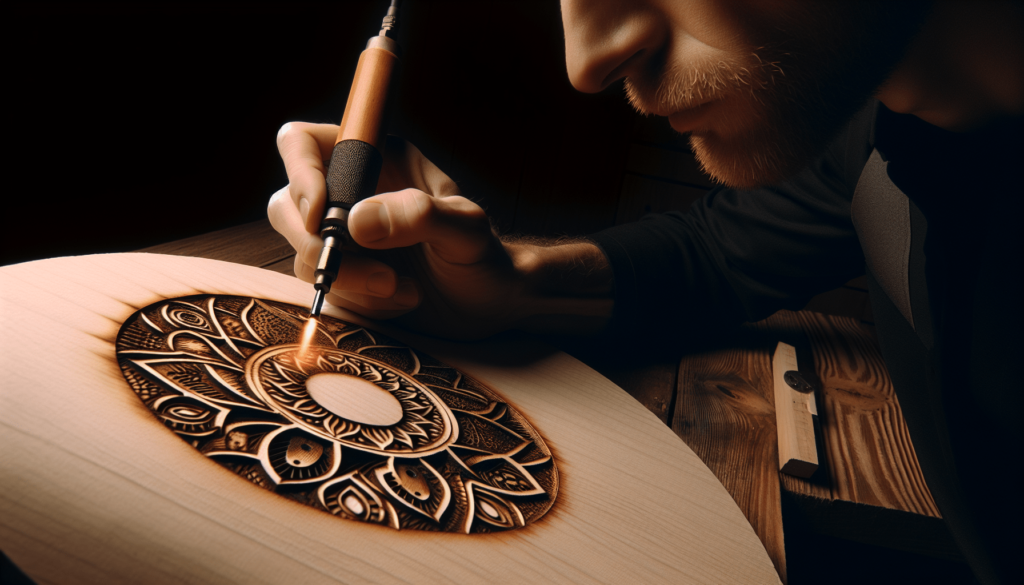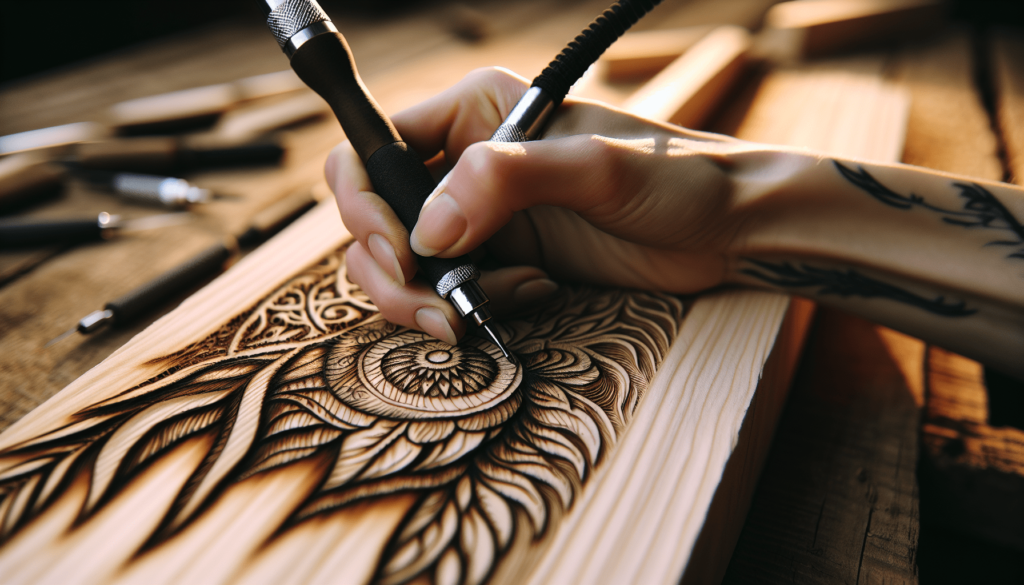Have you ever wondered if wood burning, or pyrography as the pros call it, is hard to learn? I know I have. I remember peeking over my neighbor’s fence to see them meticulously working on what seemed like a piece of art but was actually just a piece of wood with beautiful, intricate designs burned into it. That got me thinking: Can anyone learn this skill, or do you need some kind of innate talent for it? Well, let’s tackle that question together and break down the basics of wood burning.
What Exactly is Wood Burning?
First off, wood burning isn’t some fancy name for setting your fireplace logs ablaze. It’s an art form that involves creating designs on wood using a heated tool, much like drawing but instead you’re burning your strokes into the material. It’s a craftsmanship that combines precision, patience, and a bit of creativity.
The Tools of the Trade
Before diving into whether it’s hard to learn, let’s talk tools. Here are the basic ones you’ll need:
| Tool | Description |
|---|---|
| Wood Burning Pen | This is your main tool, like a painter’s brush. It comes with different tips for various effects. |
| Tips | These are like the nibs of a pen and can create different types of lines and textures. |
| Wood | Obviously, you need something to burn your design onto. Good choices include basswood or birch. |
| Safety Equipment | A mask and gloves are good to have because, believe it or not, burning wood produces fumes. |
This list isn’t exhaustive, but it’s enough to get you started. The tools themselves aren’t expensive, so you won’t need to mortgage your house to afford them.
The Basics Are Pretty Simple
So, is wood burning hard to learn? Well, the basics are straightforward. You plug in your wood-burning pen, let it heat up, pick a piece of wood, and start drawing.
The Art of Simple Designs
Initially, stick to simple designs. Think basic shapes—circles, triangles, maybe even a basic leaf or flower. Your first attempts probably won’t win any awards, but that’s okay.
Practice and Patience
The phrase “practice makes perfect” couldn’t be more apt here. Take your time and practice on unimportant pieces of wood first. The more you practice, the more comfortable you get.

Building Up Your Skills
Once you’ve got the basics down, you can start experimenting with more complex designs. But how do you go from drawing circles to crafting a detailed portrait of your cat?
Variations in Pressure and Speed
One key aspect of wood burning is controlling the pressure and speed with which you use your pen. Pressing harder creates darker, thicker lines, while lighter pressure makes finer, lighter marks. Slower strokes tend to burn deeper, while quicker ones produce lighter shades.
| Pressure/Speed | Effect |
|---|---|
| Harder Pressure | Dark, thick lines |
| Lighter Pressure | Fine, light lines |
| Slower Speed | Deeper burns |
| Faster Speed | Lighter shades |
Switching Tips
Changing the tip on your wood-burning pen can make a big difference in your work. Much like a painter switches brushes, knowing when and how to switch tips lets you achieve different textures and patterns. There are tips for shading, fine lines, and even ones for creating dots.
Common Challenges and How to Overcome Them
Every new skill has its challenges, and wood burning is no exception. Luckily, none of these are insurmountable, especially with a little advice.
The Problem of Overburning
One common rookie mistake is overburning. This happens when you let the pen sit in one spot too long, causing the wood to blacken excessively.
- Solution: Always keep your pen moving. If you need to create a darker line, go over the area multiple times rather than trying to do it all in one stroke.
Uneven Lines
Another issue is uneven lines. This can occur due to inconsistent pressure or speed.
- Solution: Practice maintaining a steady hand and consistent speed. Over time, this will become second nature.
Fumes and Smoke
Burning wood produces fumes, and that’s not something you want to inhale.
- Solution: Work in a well-ventilated area and consider wearing a mask.

The Joy of Completion
There’s something immensely satisfying about completing your first piece. Despite any initial wobbles or imperfections, the sense of accomplishment you get from finishing will be your biggest motivator.
Show It Off
Don’t be shy about showing off your work. Whether it’s posting photos on social media or giving your creation as a gift, sharing your progress will boost your confidence and inspire others.
Keep Improving
Even if you become proficient, there’s always room for improvement. Look for tutorials, watch videos, or even join a wood-burning club. Yes, they exist!
Advanced Techniques to Keep You Interested
After you’ve mastered the basics and feel comfortable, you might want to explore more advanced techniques.
Shading Techniques
Shading can really bring your designs to life. This is where varying your pressure and speed becomes crucial. Lightly drag the pen over large areas for subtle shading or go over small spots multiple times for darker areas.
Color Adding
Have you ever considered adding color to your burned designs? You can use colored pencils, watercolor, or acrylic paints. Just make sure to seal your work afterwards to protect it.
Mixed Media
Who says you have to stick to just wood? Try combining wood burning with other mediums like painting, carving, or even embedding small objects into your design. This can give your work a unique touch and set it apart from others.
Is It Worth Learning?
Let’s circle back to our original question: Is wood burning hard to learn? Like any craft, it has its learning curve. The basics are pretty easy to grasp, but mastering the skill requires time, patience, and practice.
Therapeutic Benefits
One unexpected benefit is the therapeutic aspect of wood burning. The slow, deliberate movements can be incredibly calming, almost meditative. This mindful activity can help reduce stress, and you get a beautiful piece of art at the end of it.
Final Words
I can safely say that wood burning, while having its challenges, is not particularly hard to learn. It’s much like learning to ride a bike. You wobble a bit at first, but with practice, you gain confidence and skill. Before you know it, you’ll be creating pieces you’re truly proud of. So, grab a wood-burning pen and a piece of scrap wood, and start practicing. You might just surprise yourself with what you can create.
That’s it from my side! What are your thoughts on wood burning? Have you ever tried it, or are you considering picking it up? Drop your musings or experiences in the comments below. And remember, the journey of a thousand pieces begins with a single burn.

